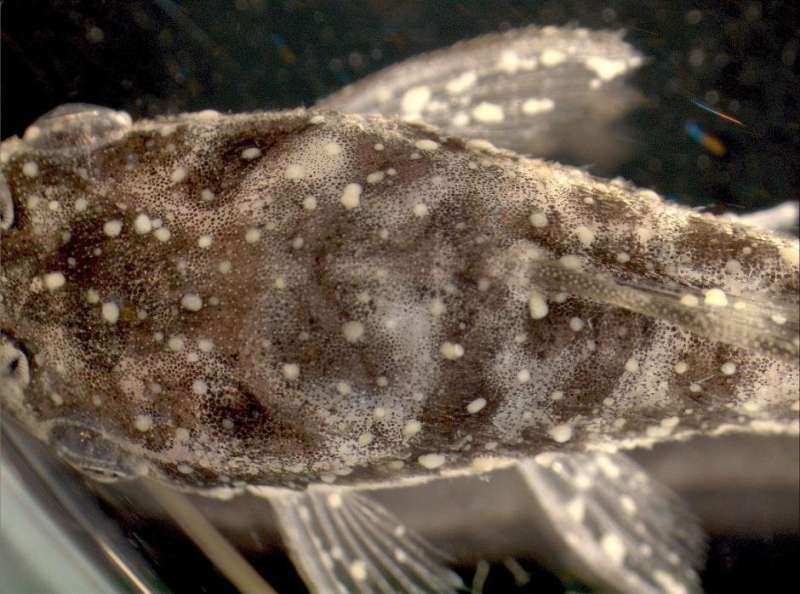An eco-friendly cure for a global fish-killing disease

Parasites are as a rule very picky about who they infect. But there are always exceptions.
The so-called 'fish killer' is a single-celled parasitic ciliate that causes problems for almost all species of freshwater fish. It affects both wild and farmed fish.
It infects the fish host and causes "White spot disease", which becomes fatal within a matter of days.
Currently, fish farms use large amounts of harmful chemicals to keep the parasite, known as Ichthyophthirius, at bay.
But the environmental damage of these chemicals could be reduced in future thanks to a new discovery, which my colleagues and I have just made at the University of Copenhagen, Denmark, in collaboration with colleagues in the Netherlands.
A devastating parasite
It's not only fish farmers and freshwater biologists that are familiar with the disease.
And they are not the only ones affected when fish become infected: White spot disease can wipe out an aquarium within a matter of days.
Ichthyophthirius is a true survivor. It has four life stages, and fortunately for the parasite, current chemical treatments do not work evenly throughout all of these stages.
These four stages are:
- The trophont: The parasite living in skin and gills.
- The Tomont: Following escape from the skin it swims freely in the water.
- Tomocyst: The tomont secretes a cyst wall and produces numerous daughter cells (theronts).
- Theront: These theronts escape the cyst and will infect fish within a few hours.
Degradable molecule kills the parasite in minutes
Our new research shows that a molecule from the bacterium Pseudomonas H6 can kill the parasite at each stage of its life cycle outside the host.
Within seconds to minutes of application of the surfactant molecule, the membrane of the parasite becomes leaky and the cell content will flow out of the cell.
After it has done its job, the molecule quickly breaks down in the environment, whether that is a lake, a fish farm, or an aquarium, so it doesn't build up over time.
This breakdown typically occurs within a few hours, but we need to study this further to find out precisely how long it takes.
The new discovery offers hope of developing a more effective and environmentally friendly way of controlling this deadly parasite.
Provided by ScienceNordic
This story is republished courtesy of ScienceNordic, the trusted source for English-language science news from the Nordic countries. Read the original story here.

















